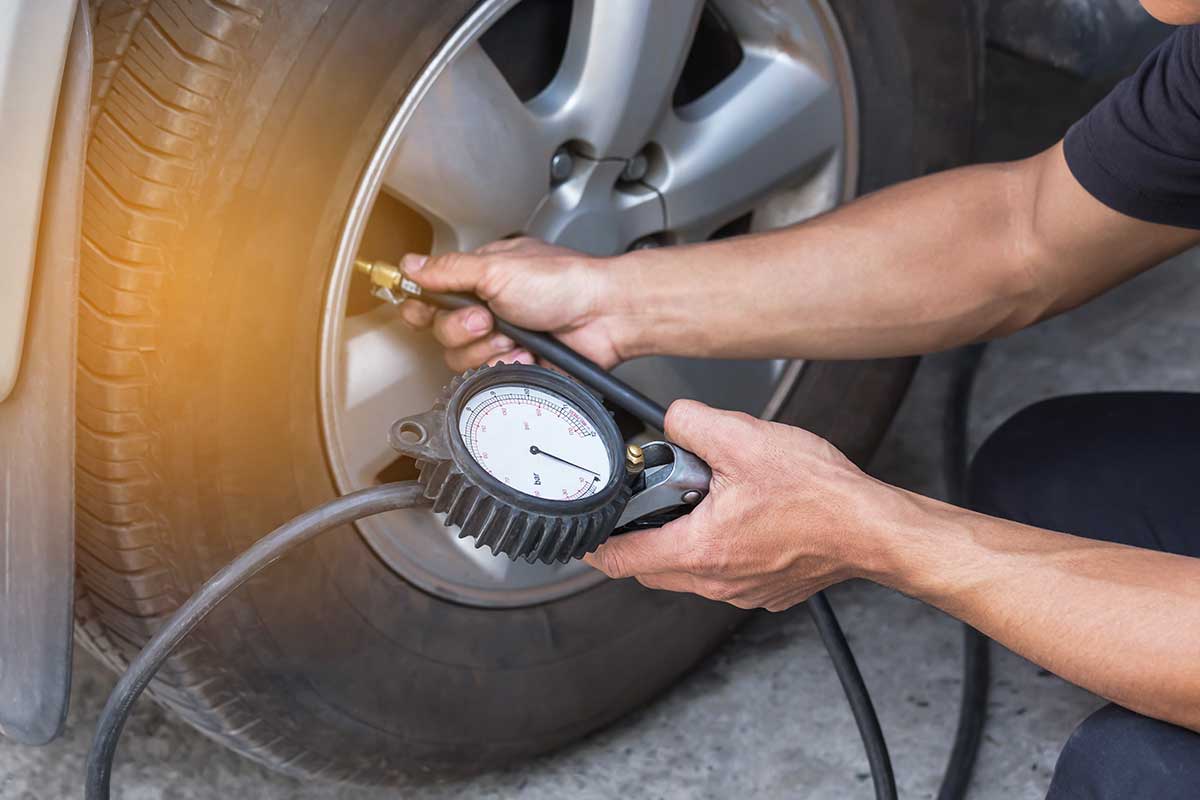Tire Inflation
When was the last time you checked the air in your vehicle’s tires? Do you own a tire gauge? Do you know what the proper inflation pressure is for your tires? If you don’t, where do you find this information?
Transport Canada’s publication Riding on Air advises that you cannot tell if your tires are properly inflated just by looking at them. In fact, they may be under inflated by as much as 20% and look just fine visually. The only way you will know if the air pressure is correct is to use your gauge when the tires are cold before your first trip of the day.
The proper inflation pressure is printed on the tire information label that is attached to your vehicle by the manufacturer. This label is most often found on the edge of the driver’s door or attached to a door frame and tells you both the recommended pressure and tire size to use. The information on the sidewall of the tire itself will tell you what the maximum safe pressure for the tire is. Never exceed this limit.
Newer vehicles may have a tire pressure monitoring system that warns the driver when a tire becomes under inflated. Some of these systems only provide a warning when the tire is seriously under inflated. If this warning is displayed, stop and use your tire gauge. If the pressure is low, consider reducing your speed and take immediate steps to correct the inflation problem.
Properly inflated tires save you money. Fuel economy decreases as inflation pressure decreases from the recommended pressure. You can save from 0.5 to 3% at the pump just by using your tire gauge. You will also reduce the pollutants and greenhouse gases emitted by internal combustion engines.
Do you have an electric vehicle? Your fuel is electricity and savings here are valid too. It translates as extended range and smaller charging costs.
Your tires wear incorrectly when proper inflation pressure is not maintained. This can result in reduced tire life and increased cost because of premature replacement.
Don’t let Murphy’s Law happen to you. While you are thinking about this subject, it’s a great time to check the condition of your spare tire too! If your vehicle is equipped with a space saving temporary spare tire, make sure you know its limits. Read your owners manual!
How To Check Tire Pressure Correctly:
- Start with cold tires
- Use an accurate gauge
- Know the correct pressure from the placard
- Fill to that pressure
- Repeat next month
Tim Schewe
Road Safety Advocate
DriveSmartBC.ca
Have you been classed in Auto insurance as a high-risk driver in Ontario? Visit the High Risk Auto Pros online and get an instant car insurance quote.
Are you a Business Owner? Perhaps you’re a business owner looking for commercial insurance? Public Liability, Commercial Vehicle Insurance… Get the right Business insurance for your company. Request a quote today from the Commercial Insurance Pros.





